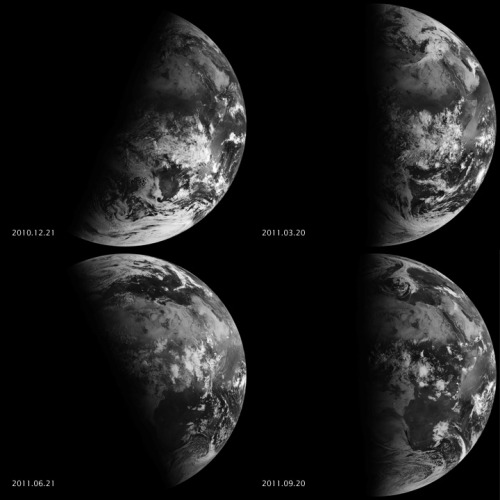Welcome Back, Sol
The actual reason for the season: days start getting longer starting today.

Understanding the Solstice
The first day of winter and the shortest day of the year begin tomorrow, December 22, the day of the Winter solstice. At 4:48 am Greenwich Mean time, the Solstice will arrive. The word solstice is relatively old in English, dating back to the 13th century. Solstice derives from the Latin word solstitium meaning very literally the point at which the sun stands still, a combination of the words sol meaning sun and the past participial stem of sistere meaning to come to a stop, make stand still. Celebrated thoughout history as either a secular or religious day, the solstice marks the point on the ecliptic when the Northern Hemisphere is pointed most away from the sun and therefore has the shortest day.The easiest way to visualize the effect of the Earth’s orbit around the sun and the changing seasons is to view it from space. Above, the winter and summer solstices and the vernal and autumnal equinoxes from 2011. On the equinox (Latin for equal night) you can clearly see that the shadow is straight up and down, giving us equal day and night, while in the solstices, the Earth is either inclined toward or away from the Sun, giving us days and nights of different lengths. For reference, find the Arabian peninsula in the upper right quadrant of each image. The second illustration shows what it looks like the Sun is doing, but remember that we travel around the Sun, not the other way around.Satellite photos courtesy of NASA in the public domain.






No comments:
Post a Comment